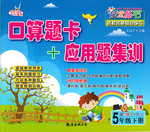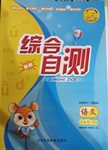题目内容
The 115-year-old prestigious (有名望的)Oxford Dictionary will now include popular new Chinese terms like“shanzhai” “youtiao” and “fangnu”, as part of the modern Chinese language.
As China plays a more and more important role in the world economy, the Chinese language is forever developing, attracting more attention from people who want to understand this ancient yet lively language.
For instance, the word “shanzhai” is used to describe the countless knockoffs(名牌仿制品)of iPhones or designer bags imprinted with Louis Vuitton logos.
Another new term in the new edition is the word “fangnu”, or a “mortgage slave” —a term used to describe the phenomenon in large cities where well-educated youth complain of a miserable existence due to the heavy burden of a home mortgage.
All these new or often fashionable terms can be found in the new Oxford English –Chinese, Chinese-English dictionary that was unveiled(公布于众的)in the recently concluded Beijing International Book Fair last week.
The dictionary now is available for retail sales since the beginning of this month.This dictionary is the largest single volume English-Chinese, Chinese-English dictionary and contains 670,000 words and phrases after five years of preparation.Sixty editors from the Oxford University Press and its partner in China—the Foreign Language Teaching and Research Press—worked together on the project.According to Julie Kleeman, the dictionary’s chief editor, most of the firm’s editors were Chinese, while about one fourth were native-English speakers.
“We don’t want to make it florid(绚丽的), we want it to be modern and conversational...many of the words in the present dictionary are no longer in use,” said Kleeman.“The need for studying Chinese by foreigners today is totally different from decades ago...Precise, native and practical—that is our main advantage,” she said.
Kleeman said newer publications updates will be available only for the online version as language often changes too quickly for book versions to keep pace.The online version will also offer a Chinese phonetic pronunciation guide.The online version, allowing access via different platforms from the PC to the iPad, will be ready “as soon as possible”, Kleeman said.
【小题1】 According to the above passage, we learn that ________.
| A.knockoffs can be found in China but not very often. |
| B.the Oxford University Press made the dictionary without outside aid. |
| C.most Chinese editors are also native speakers of English. |
| D.well-educated youth in China’s big cities have difficulty buying houses. |
| A.book versions can’t keep up with the changes of language. |
| B.the computer network is available everywhere. |
| C.book versions can’t offer a Chinese phonetic pronunciation guide. |
| D.computer technology like the PC and the iPad keeps pace with language. |
| A.New Chinese terms like “shanzhai” and “fangnu” have got into Oxford Dictionary. |
| B.The latest Oxford English-Chinese, Chinese-English Dictionary is on the market. |
| C.Oxford Dictionary has become more fashionable due to the Chinese language. |
| D.Beijing International Book Fair was where the new Oxford Dictionary was published |
【小题1】D
【小题2】A
【小题3】B
解析试题分析:文章介绍了由于中国的发展,越来越多的外国人学习汉语,汉语的变化也不断更新,新的牛津英汉,汉英词典正上市。
【小题1】细节题:从第四段的句子:a term used to describe the phenomenon in large cities where well-educated youth complain of a miserable existence due to the heavy burden of a home mortgage.可知中国受过良好教育的年轻人买房难。选D。
【小题2】细节题:从最后一段的句子:Kleeman said newer publications updates will be available only for the online version as language often changes too quickly for book versions to keep pace.可知书的更新跟不上语言的变化,选A
【小题3】主旨题:从第五段的句子:All these new or often fashionable terms can be found in the new Oxford English –Chinese, Chinese-English dictionary that was unveiled(公布于众的)in the recently concluded Beijing International Book Fair last week.可知新的牛津英汉,汉英词典正上市。选B
考点:考查文化类短文
点评:文章介绍了由于中国的发展,越来越多的外国人学习汉语,汉语的变化也不断更新,新的牛津英汉,汉英词典正上市。这篇文章考查细节题主旨题较多,对考生要求较高,既要对文章有整体把握,也要理解有些重点的句子。集中考查了句意理解题,要求考生有较强的细节理解能力。

 口算题卡加应用题集训系列答案
口算题卡加应用题集训系列答案 综合自测系列答案
综合自测系列答案The 115-year-old prestigious (有名望的)Oxford Dictionary will now include popular new Chinese terms like“shanzhai” “youtiao” and “fangnu”, as part of the modern Chinese language.
As China plays a more and more important role in the world economy, the Chinese language is forever developing, attracting more attention from people who want to understand this ancient yet lively language.
For instance, the word “shanzhai” is used to describe the countless knockoffs(名牌仿制品)of iPhones or designer bags imprinted with Louis Vuitton logos.
Another new term in the new edition is the word “fangnu”, or a “mortgage slave” —a term used to describe the phenomenon in large cities where well-educated youth complain of a miserable existence due to the heavy burden of a home mortgage.
All these new or often fashionable terms can be found in the new Oxford English –Chinese, Chinese-English dictionary that was unveiled(公布于众的)in the recently concluded Beijing International Book Fair last week.
The dictionary now is available for retail sales since the beginning of this month.This dictionary is the largest single volume English-Chinese, Chinese-English dictionary and contains 670,000 words and phrases after five years of preparation.Sixty editors from the Oxford University Press and its partner in China—the Foreign Language Teaching and Research Press—worked together on the project.According to Julie Kleeman, the dictionary’s chief editor, most of the firm’s editors were Chinese, while about one fourth were native-English speakers.
“We don’t want to make it florid(绚丽的), we want it to be modern and conversational...many of the words in the present dictionary are no longer in use,” said Kleeman.“The need for studying Chinese by foreigners today is totally different from decades ago...Precise, native and practical—that is our main advantage,” she said.
Kleeman said newer publications updates will be available only for the online version as language often changes too quickly for book versions to keep pace.The online version will also offer a Chinese phonetic pronunciation guide.The online version, allowing access via different platforms from the PC to the iPad, will be ready “as soon as possible”, Kleeman said.
1.According to the above passage, we learn that ________
A.knockoffs can be found in China but not very often.
B.the Oxford University Press made the dictionary without outside aid.
C.most Chinese editors are also native speakers of English.
D.well-educated youth in China’s big cities have difficulty buying houses.
2.The possible reason why newer publications updates are not available for book versions is that ________.
A.book versions can’t keep up with the changes of language.
B.the computer network is available everywhere.
C.book versions can’t offer a Chinese phonetic pronunciation guide.
D.computer technology like the PC and the iPad keeps pace with language.
3.What is the main idea of the passage?
A.New Chinese terms like “shanzhai” and “fangnu” have got into Oxford Dictionary.
B.The latest Oxford English-Chinese, Chinese-English Dictionary is on the market.
C.Oxford Dictionary has become more fashionable due to the Chinese language.
D.Beijing International Book Fair was where the new Oxford Dictionary was published.